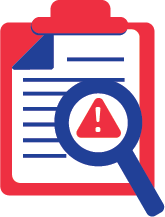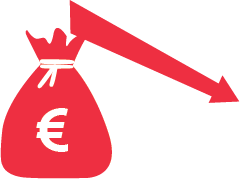The Shipping Industry: The greatest source of global carbon emissions?
There are various emissions from the ship which are responsible for ozone depletion greenhouse effect as well as human health due to this pollutant by the seat meaning premature death respiratory and cardiovascular disease were reported
The shipping industry is the backbone of World Trade. It contributes around more than 80% of the World Trade. Most of the flow of the commodity is mainly done by the shipping industry only but everything has its disadvantages too today shipping industry has become one of the most anthropogenic emission sectors. There are various emissions from the ship which are responsible for ozone depletion greenhouse effect as well as human health due to this pollutant as well as particulate matter emitted by the seat meaning premature death respiratory and cardiovascular disease were reported.
It is now more critical than ever to keep an eye on what ships are emitting in a time of stringent maritime laws and environmental concerns. However, keeping track of the 50,000 ships now at sea is no small task. How does one go about accomplishing such a task? Let us explain.
Carbon dioxide, nitrogen oxides, oil, sludge, ballast water, and bilge water, among other pollutants, are an extensive array of ship emissions that warrant further investigation. Sulfur oxide is one of the most dangerous and, as a result, is highly regulated (SOx). Port State Control authorities, who are in charge of keeping an eye on ships docked in their country, concentrate the majority of their efforts here.
A few of the methods in which data could be recorded and reported to curb emissions are as follows:
Technical approach
Operational approach
Carbon dioxide, nitrogen oxides, oil, sludge, ballast water, and bilge water, among other pollutants, are an extensive array of ship emissions that warrant further investigation. Sulfur oxide is one of the most dangerous and, as a result, is highly regulated (SOx). Port State Control authorities, who are in charge of keeping an eye on ships docked in their country, concentrate the majority of their efforts here.
A few of the methods in which data could be recorded and reported to curb emissions are as follows:
Technical approach
Operational approach
- SEEMP (Ship Energy Efficiency Management Plan)
- CII Rating (Carbon Intensity Indicator)
Implementation of IMO Instruments: Curbing ship emission
What is EEXI?
The EEXI is part of the IMO's methodological approach to enhancing the operational efficiency of current ships. With the goal of meeting GHG reduction objectives and eventually making shipping carbon-neutral, the International Maritime Organization (IMO) established this new addendum of EEDI for ships constructed before 2013, which only evaluates design specifications and not operating aspects.
The 76th session of the Marine Environment Protection Committee (MEPC 76) convened in June 2021 approved revisions to Annex VI of the MARPOL agreement.
Now, what does this mean for shipowners? EEXI standards must be met before the maritime sector may transition to other low-carbon fuels. Ships should not dip below their optimal speed to avoid increasing fuel consumption and carbon emissions, but restricting the power of engines is the most efficient approach to achieve compliance. A combination of Engine Power Limiter and cost-intensive Energy saving devices may be necessary to enhance ship EEXI, which needs early effort to determine the most cost-effective choices.
The EEXI is part of the IMO's methodological approach to enhancing the operational efficiency of current ships. With the goal of meeting GHG reduction objectives and eventually making shipping carbon-neutral, the International Maritime Organization (IMO) established this new addendum of EEDI for ships constructed before 2013, which only evaluates design specifications and not operating aspects.
The 76th session of the Marine Environment Protection Committee (MEPC 76) convened in June 2021 approved revisions to Annex VI of the MARPOL agreement.
Now, what does this mean for shipowners? EEXI standards must be met before the maritime sector may transition to other low-carbon fuels. Ships should not dip below their optimal speed to avoid increasing fuel consumption and carbon emissions, but restricting the power of engines is the most efficient approach to achieve compliance. A combination of Engine Power Limiter and cost-intensive Energy saving devices may be necessary to enhance ship EEXI, which needs early effort to determine the most cost-effective choices.
1. EEXI (Energy Efficiency Existing Ship Index)
A Ship Energy Efficiency Management Plan (referred to as the "SEEMP") outlines a feasible method for tracking ship and fleet efficiency performance on an ongoing basis, as well as presents strategies to explore when attempting to improve the ship's performance.
It is mandated under the 1973 International Convention for the Prevention of Pollution from Ships, as amended in 1978 (MARPOL 73/78), that all ships must have a SEEMP.
What makes up a SEEMP?
SEEMP is divided into two parts. A strategy to track and optimize the ship's and fleet's efficiency over time is included in Part I, which is applicable to ships of 400 gross tonnages or more. SEEMP Part I mostly remains unmodified. As a ship-specific strategy, the corporation would create Part I of the SEEMP, which outlines its goals for increasing a ship's overall energy efficiency.
In Part II, methodologies and methods for reporting fuel oil consumption data to the ship's Administration or any entity officially authorized by the ship's Administration (i.e. RO) are included, which is suitable to ships of 5000 gross tonnages and above.
It is mandated under the 1973 International Convention for the Prevention of Pollution from Ships, as amended in 1978 (MARPOL 73/78), that all ships must have a SEEMP.
What makes up a SEEMP?
SEEMP is divided into two parts. A strategy to track and optimize the ship's and fleet's efficiency over time is included in Part I, which is applicable to ships of 400 gross tonnages or more. SEEMP Part I mostly remains unmodified. As a ship-specific strategy, the corporation would create Part I of the SEEMP, which outlines its goals for increasing a ship's overall energy efficiency.
In Part II, methodologies and methods for reporting fuel oil consumption data to the ship's Administration or any entity officially authorized by the ship's Administration (i.e. RO) are included, which is suitable to ships of 5000 gross tonnages and above.
2. SEEMP
The CII rating system must be followed by all cargo and cruise ships having a gross tonnage of more than or equal to 5000. As part of its goal to "lower CO2 emissions per transport work ", the IMO has brought the CII into action.
How does the Carbon Intensity Indicator work?
Ships are assigned an efficiency grade from A to E based on the difference between their achieved and necessary CII. A is the highest possible rating and E is the poorest.
Ship operators will be required to compute and report the attained CII and CII rating of their ships, as well as their IMO DCS fuel oil data, starting in 2023.
How does the Carbon Intensity Indicator work?
Ships are assigned an efficiency grade from A to E based on the difference between their achieved and necessary CII. A is the highest possible rating and E is the poorest.
- Rating each vessel according to its CII based on 2023 usage statistics (CII Guideline, G1)
- CII and "A" – "E" ratings will be added to the SOC of the IMO DCS in accordance with the Reference Line (G2), the Reduction Factor (G3), and the Rating Guideline (G4)
- Vessels with a low rating ("E" or "D" for three consecutive years) should establish a remedial action plan and have it authorized by the Administration or RO.
Ship operators will be required to compute and report the attained CII and CII rating of their ships, as well as their IMO DCS fuel oil data, starting in 2023.
3. Carbon Intensity Indicator (CII)
Ships' emissions data must be collected through the MRV, DCS, and Digital Noon Reports standards, however, this is just one phase of a much bigger process.
Strategies of Data Collection
To combat ship emissions, the European Union (EU) implemented the shipping Monitoring, Reporting, and Verification (MRV) policy, which collects data on CO2 emissions from ships' fuel usage.
Reporting focus:
Reporting path:
Verification by: Independent accredited verifiers
Compliance: Document of compliance
Publication of data: Distinctive Public Database
Reporting focus:
- Distance traveled time spent at sea
- Amount of each type of fuel consumedin port/at sea
- Cargo carried
Reporting path:
- Annual Emission Report to be verified by an accredited verifier within EMSA's THETIS-MRV database
- The company then submits the verified Emission Report to the European Commission via THETIS-MRV
Verification by: Independent accredited verifiers
Compliance: Document of compliance
Publication of data: Distinctive Public Database
1. EU MRV
The IMO has implemented a three-step process that begins with gathering and analyzing fuel usage information before determining what additional steps should be taken to reduce ship-generated greenhouse gas (GHG) emissions. The IMO Data Collection System (DCS) came into force in March 2018 after revisions to MARPOL Annex VI were adopted by resolution MEPC.278 (70).
Reporting focus:
Reporting path:
Verification by: Flag administration or authorized organization
Compliance: Statement of compliance
Publication of data: Anonymous Database
Reporting focus:
- Distance traveled
- Amount of each type of fuel consumed in total
- Hours underway under own propulsion
Reporting path:
- Fuel oil consumption to be verified by the flag administration or Recognised Organisation (RO) either annually or where there is a change of flag or owner
- Flag state (or RO) reports the verified fuel oil consumption data to the IMO's GISIS database
Verification by: Flag administration or authorized organization
Compliance: Statement of compliance
Publication of data: Anonymous Database
2. IMO-DCS
Digital noon report is a part of Weather routing and voyage optimization system - SaaS solution for shipping companies, shipowners, and freight forwarders that need to know the current status of the voyage, vessel performance metrics and to predict the time of arrival of the ship at the pilot station with high accuracy.
Reporting focus:
Reporting path:
Verification by: Independent accredited verifiers
Reporting focus:
- Vessel Performance Analysis
- Inspection, surveys
- Predictive maintenance
Reporting path:
- It is a report prepared by the Chief Engineer on-board with the assistance of a deck officer, which is further sent to shore personnel by the master on a daily basis
Verification by: Independent accredited verifiers
Digitalization is believed to have a two-fold effect on the maritime industry. To begin, digital data enables ships' operational and energy efficiency to be optimized, while also greatly improving information transmission between various stakeholders. Collecting and exchanging digital data enables supply chain optimization. Second, digitization may alter maritime business models and the overall concept of how ships are run. Ships will have lower waiting times and terminals will handle cargo more quickly as a result of digital technologies. Additionally, optimized voyages based on real-time weather, wind, and ocean current data will result in energy savings. As a result, the advancement of digitalization will lead to the lowering of carbon emissions.
As the globe moves toward greater autonomy, the shipping sector is reacting with smart ship technologies such as the Internet of Things (IoT) and data analytics, as well as modernized conceptions based on these technologies.
As the globe moves toward greater autonomy, the shipping sector is reacting with smart ship technologies such as the Internet of Things (IoT) and data analytics, as well as modernized conceptions based on these technologies.
- Vessel Fuel Optimization System - A cutting-edge digital technology that collects real-time data on a variety of external parameters affecting a vessel's fuel consumption, such as engine condition, hull condition, vessel speed, trim, and draught, and then processes and interprets the data using a machine learning module. The evaluation of data indicates alterations to the route, vessel speed, or other indicators in order to limit fuel use.
- Route Optimization System - In general, ships follow pre-defined routes that have been developed using a variety of input data, but because these routes are often for months-long voyages, forecasting optimal circumstances in advance is impossible. Real-time route management can make a significant difference in terms of journey duration and efficiency. Given the extended amounts of time that ships spend at sea and the chance that ocean conditions can change dramatically within a few hours, it is critical that ship operators have access to real-time data. The software continuously monitors vessels and data in real-time to discover ideal routes and inform operators when action is required based on weather patterns, piracy alerts, port traffic, and other variable parameters. Route optimization is certain to have a beneficial effect on the environment and economics, without jeopardising safety.
- Vessel Performance Monitoring - At its foundation, data analytics is about monitoring vessel performance. By collecting and analyzing data on engine conditions and exhaust gas properties, we can determine the performance of abatement technologies such as DWI, IAH, SCR, and EGR, as well as the efficacy of water injecting devices and scrubbers.
- Predictive Maintenance System - Onboard machinery and equipment are subjected to significant wear and tear as a result of exceptionally prolonged running hours, demanding a higher frequency of maintenance cycles. There cannot be any downtime or inefficiency in the equipment and systems used to treat exhaust gas emissions, since this would jeopardize ships' compliance with IMO MARPOL standards and would also cause serious environmental harm.
Digitalization: A new dawn in Abatement of Emissions
Emissions are projected to boom from approximately 90% of 2008 emissions in 2018 to 90-130% of 2008 emissions with the aid of using 2050 for a number attainable long-time period monetary and strength scenario. Although it's far too early to evaluate the effect of COVID-19 on emission projections quantitatively, it's far clear that emissions in 2020 and 2021 have appreciably decreased.
The ultimate solution for reducing emissions from marine engines is to increase fuel efficiency rather than improvising the after-treatment of exhaust gas left behind or waiting for a viable alternative fuel. Technology is set to play a big role in helping the maritime industry drive greater fuel efficiency.
Read more about "IMO Compliance and CII Optimization through SEEMP" in the review made by the Marine Digital team "The Pathway to Zero Carbon Shipping"
The ultimate solution for reducing emissions from marine engines is to increase fuel efficiency rather than improvising the after-treatment of exhaust gas left behind or waiting for a viable alternative fuel. Technology is set to play a big role in helping the maritime industry drive greater fuel efficiency.
Read more about "IMO Compliance and CII Optimization through SEEMP" in the review made by the Marine Digital team "The Pathway to Zero Carbon Shipping"
Conclusion

Leave your e-mail, which will receive a link where you can download the review "The Pathway to Zero Carbon Shipping"


Get an overview "The Pathway to Zero Carbon Shipping:
IMO Compliance and CII Optimization through SEEMP" on email and download it for FREE! Leave your email now!
"Clicking the button, you consent to the processing of personal data and agree to the privacy policy, as well as consent to subscribe to the newsletter. "
Аdvantage of Fuel Optimization System from Marine Digital:

Marine Digital FOS can be integrated with other system and third-party's solutions through the API. To implement vessel performance monitoring for any vessel, we are using mathematical algorithms, machine learning and the same equipment as in FOS. The more data we collect from vessels, the more precise reports and recommendations our system will perform according to your individual requirements in fleet management.
If you have any questions about the solutions and the Marine Digital System platform, write to us, we will be happy to answer
If you have any questions about the solutions and the Marine Digital System platform, write to us, we will be happy to answer

Increased business process speed

Reducing to zero the number of errors

Best offer to the clients

Reduction in operating expenses
Have a questions?







